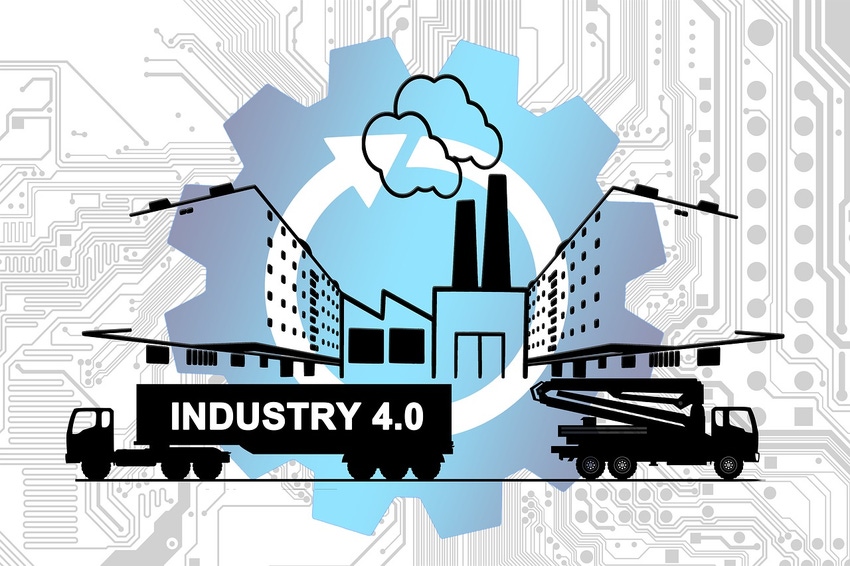Industry experts agree, the systems integrator effort is not scalable and is creating obstacles preventing Industry 4.0 from reaching its full potential.
September 27, 2019

|
(Image source: Gerd Altmann from Pixaba) |
The manufacturing industry is undergoing technological transformation, but progress has been slow. From artificial intelligence to robotics and automation, technological advancements have arrived, yet roadblocks exist that are preventing widespread adoption.
To uncover little-discussed insights from technology leaders in manufacturing, I recently sat down with Tai-Yi Huang, CVP and CTO of ASUS, a top consumer electronics brand and manufacturer, and Mark Jagiela, CEO of Teradyne, a company that automates repetitive manual tasks and electronic tests for the semiconductor and electronics markets. We all came to agree that while manufacturing provides many high-leverage applications for AI and automation, widespread adoption of the technologies that are on the market has been slow. “The reason we don’t see more AI in factories is that the systems integration effort is too heavy,” Huang said.
The Integrator Issue
In the manufacturing ecosystem, there are three major players: vendors, buyers, and systems integrators. The technology vendors develop and provide new technology products, like smart cameras, robot arms, or analytics software. The buyers are the brands or manufacturers who want to incorporate that technology into their process. In order to do that, they employ a middleman of sorts, a systems integrator. Systems integrators specialize in knowing about all of the available technologies and delivering combinations of them, tied together with some custom engineering, to provide a complete (but often non-reusable) turnkey solution for the manufacturer’s specific need. If the systems integrator selects a smart camera as part of the solution, they will also be the ones to do a custom programming of the camera to work for the use case.
The problem is that every use case requires a new, custom setup (not to mention if changes are made to the process or parts, these setups have to be updated), which makes it very slow and very expensive. As a result, it only makes sense to use systems integrators, and the automation they provide, for the most painful applications in the upper echelon of ROI. There are countless other potential applications in the visual inspection space alone where the cost of the technology isn’t prohibitive, but the cost of integrating it is. As Huang put it, “The systems integrator effort is not scalable.”
Since systems integrators have been the main method that technology vendors use to deliver new technologies for decades, they have designed with them in mind. Many technology products for manufacturing prioritize delivery of advanced functionality over ease-of-use and intuitive design. Complex user interfaces mean that manufacturer’s often cannot make minor adjustments or updates to their own automated solutions without calling in an integrator and paying their fees. It also means that manufacturers are sometimes not getting everything they could be from the technologies they’ve purchased, because additional setup would be expensive. Jagiela used this analogy: “Let’s say you order a computer, a printer, and a router - they are all self installed. Robots will need to be the same. As long as humans are in the loop we will have to design for usability.”
RELATED ARTICLES:
The pervasive use of systems integrators also points to larger issues that affect everything from automation to AI. Most importantly it points to a lack of readily available data. Data is the lifeblood of any AI engine. While many manufacturing processes in the United States are at least partially automated, where ASUS builds, for example, most tracking and assembly processes are still manual – including paper and pencil notations and manually generated reports.
Needless to say, these paper or low-resolution MES (manufacturing execution systems) tracking systems are usually not good candidates for AI analysis. When paper and manual reports compiled in Excel are part of the foundational data system for a manufacturing process, it’s difficult to build anything more advanced on top. Even different sites owned by the same manufacturer may use different data systems. Huang explained, “Right now everything is unique, so each data solution is unique.”
AI Over Integration
So how do we unblock technology adoption to bring about the dividends of Industry 4.0? AI seems to be the answer. The opportunity is tantalizing: AI can help to bridge the gap. Today we have applications that require custom setups by systems integrators, but AI provides the opportunity for generalized technologies to set themselves up as they learn about an application from data – with little to no systems integration efforts. Technology providers are adapting accordingly, Jagiela shared, “Deployments have hurdles and friction, which is why we have focused on removing the pain there.”
It’s clear that the industry needs fundamental changes in the complex ecosystem required to get technology on manufacturing lines. Technology solutions must decrease deployment friction and prioritize flexible solutions, such as self-learning or adaptable AI technologies. Manufacturing companies must also take fundamental steps towards digitization and remove data extraction hurdles. Manufacturers should start by investing in technologies that capture readily available and often overlooked data, like images, and favor options that can deliver concrete ROI.
With the manufacturing industry facing heavy pressure from external forces to scatter portions of their supply chains, the status quo is just not going to scale. Now more than ever is the time to invest in AI technologies in order to scale, stay competitive, and get the benefits promised by Industry 4.0.
Anna-Katrina Shedletsky is a former product design lead at Apple and the Founder and CEO of Instrumental, a company that leverages AI and machine learning for quality assurance and manufacturing applications.
The Midwest's largest advanced design and manufacturing event! |
About the Author(s)
You May Also Like





